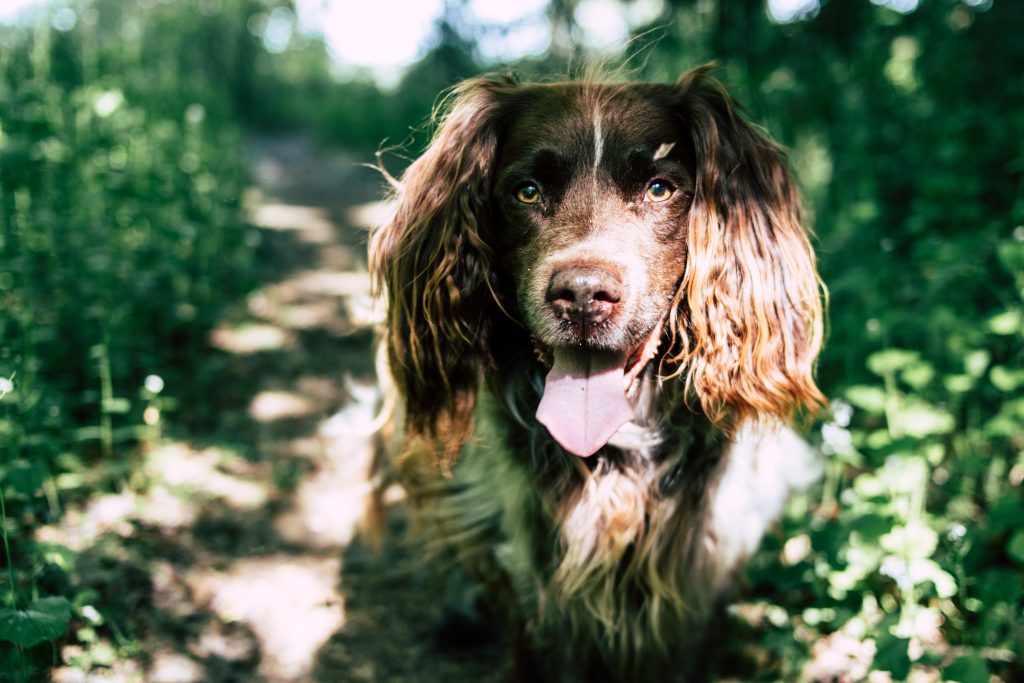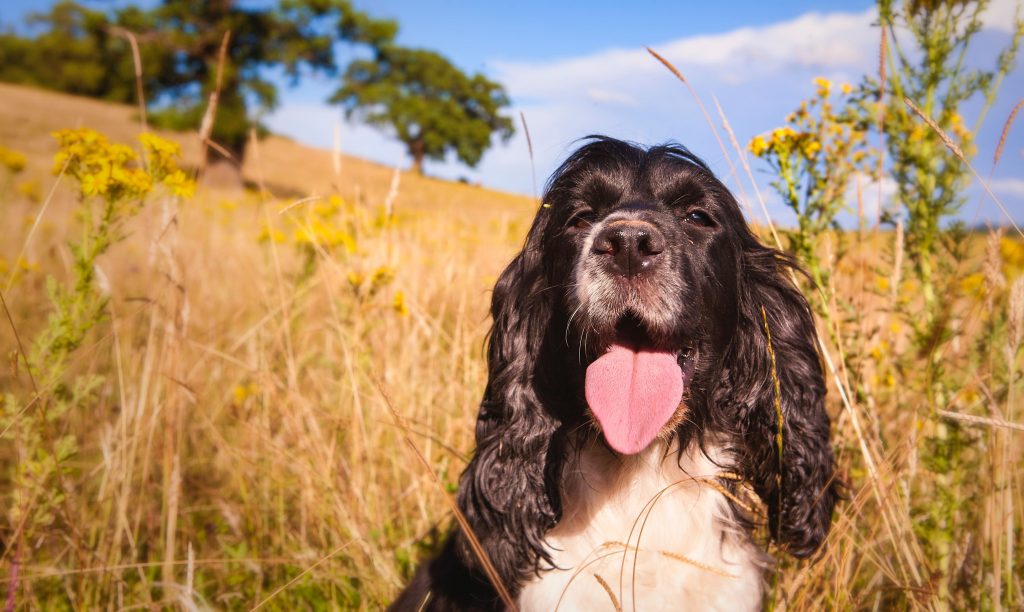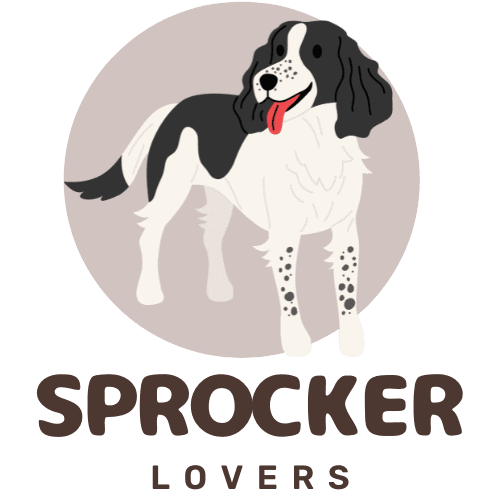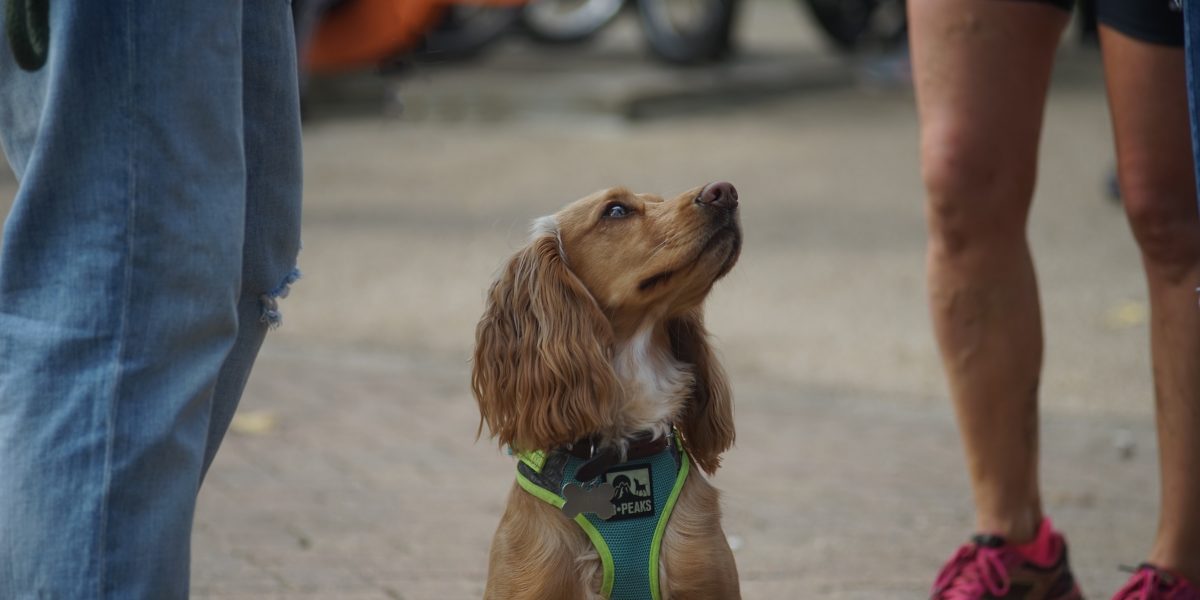Sprockers have coined the name “Sprockerdile” because biting is a key part of their puppy stage.
They might not have many teeth when they start biting, but those they do have can really hurt.
Biting is a common behavior that needs to be nipped in the bud.
The downside? It’s hard to pull through and get out of the other side. But it is possible.
In this guide, we’ll share why Spaniel puppies bite, along with six techniques you can use to stop your puppy from biting.
This post contains affiliate links. Please read my full disclosure here.
Why do Spaniel puppies bite?
Here comes the million dollar question: why does my Spaniel puppy try to bite everything in sight?
Also known as mouthing, Spaniels start using their mouths to bite things when they’re teething. Their gums can be painful and chomping down on something can help to ease their pain… even if it’s your arm that’s the victim.
Their teeth begin to drop out at around 12 weeks. Up to the 6-8 month period, their adult teeth will be growing through.
Coincidentally, this is the prime time for puppy mouthing.
Their biting isn’t always done aggressively. Sure, it can look like they’re coming in for the kill when their jaws are wrapped around your arm. But most of the time, it’s because their teeth are hurting and their gums need some comfort.
Mouthing is also how your puppy will learn to navigate their new surroundings.
Not only that, but Spaniels are infamous for carrying things in their mouth. Their history of being a working dog means they were bred specifically for retrieving things. That might be why they’re using their mouthes so often as puppies.
During this teething period, Spaniel pups might take a liking to your arms and hands. But they might also prefer items like skirting boards, socks, or furniture.
Take note of what they clasp their jaws around when they’re teething; we’ll use this later.
(Socks were the biggest problem for my Sprocker puppy, Hugo. It got to a point where we couldn’t wear socks in the house because he’d try and pull them off–and that was in the middle of winter.)

The importance of bite inhibition
Sounds like a fancy dog trainer word, right?
Bite inhibition simply means your dog is in control of how soft (or hard) they bite.
Teaching this during the teething stage might feel like an impossible battle, but you don’t want your Spaniel pup to still be biting as a means of play once their adult teeth to come through.
Biting is one of the most common reasons why dogs are rehomed (and often don’t stay in their new home.)
But if you can teach your puppy bite inhibition, they’ll know how to control their jaw. The end result is a puppy that doesn’t bite too hard and ruin your furniture. It’ll go down to smaller and softer nips, until they learn to stop mouthing entirely.
(To put this into context: We taught Hugo not to bite anything skin-related. Now, he still tries to mouth when he’s overtired, but he’ll stop himself immediately when he feels his teeth touching our skin.)
How to stop a Spaniel puppy from mouthing
Now we know why Spaniel puppies turn into Sprockerdiles and the bite inhibition they need to learn, here are five simple ways to stop your puppy from mouthing.
1. Swap the item they’re biting with a toy or frozen treat
Most of the time, puppies begin biting when their gums need soothing.
But you need to teach them that your arm (and your furniture) aren’t appropriate things to chew on.
Instead, try swapping your arm with a toy or frozen treat. You’re showing them things they’re allowed to chew on; those items should be left for chewing and nothing else.
Remember how we mentioned you should take notice of what your pup goes for when they’re teething? Make your replacement toy similar.
For example: if they’re chewing socks, give them a fluffy toy. If hard skirting boards are more their style, opt for natural chews like antlers or yaks.
KONGs are great for teething puppies! Grab one and stuff it with one of these KONG recipes. Shove it in the freezer and they’ve got a great, cool chew to bite down on.
2. Welp and cry, or say “no”, after every bite
Having a puppy that uses your arm as a teething stick can be painful to say the least.
If the pup was still with their mum, they’d be shown how to control their bite inhibition by their mother’s yelping. She’d give a small yelp each time they bit too hard so they could learn what was (and wasn’t) an acceptable nip.
You could replicate this by either:
- Welp and cry, just as their mum would’ve done if they bit too hard
- Say “no” firmly to show you’re not happy with their behaviour
Whichever approach you choose, be consistent with it. Mix-matching your approach can be confusing to a puppy. So, pick one and do that each time you get a nip.

3. End play time after they start mouthing
If you’re relatively new to puppy training, or your dog is still quite young, they might not understand your training just yet. They can continue to mouth because they’re still not understanding that it’s wrong.
So, if you’ve repeated the first two steps and they’re still continuing to mouth, end your play time immediately.
Take an exaggerated approach to this. Say “no” firmly, turn away, cross your hands–anything that makes your body language look stern, upset, or angry.
You can go back to playing once they’ve calmed down. Repeat until they know that biting = the end of playtime.
4. Give them time-out if needed
Tried everything and still dealing with a hyperactive, biting Spaniel puppy?
By this point, I’d bet my bottom dollar that they’re overtired.
Spaniels need lots of sleep as puppies because they’re so energetic throughout the day. A mad 15 minutes can make the feel exhausted. (Not to mention that sleep is when they grow most.)
Don’t be afraid to give them a time-out if their biting becomes too much. They can go in their crate, or in another room of the house, to calm down. Chances are, they’ll be snoozing away after five minutes–proof that they can start mouthing excessively when they’re overtired.
Read more: Should I Crate Train My Spaniel?
5. Be consistent
This is by far the most important part of training a puppy to stop mouthing: be consistent!
No type of dog training works if your pup is getting mixed messages. If you’re only yelping on every other bite, or they know you’ll sometimes continue playing even if it does get too rough, how will they learn that biting is wrong?
Pick a tactic and stick with it. The same goes for other family members.
Teach your kids the same rules you’ll be following, and don’t be afraid to give your Spaniel pup 10 minutes of time-out if it does get too much.
Remember: they’re still learning. Give them time.
Don’t give up; it does get better!
When I look in the Sprocker Facebook groups, mouthing puppies is the most common thing that owners need help with.
I don’t blame them (and I was there myself.) A biting, nipping Sprockerdile isn’t fun to be around, especially if you’ve got kids.
Stick with these tips and bear with it.
It might take some time for their adult teeth to grow in, and for them to learn how to stop biting. But it’ll be worth it.


